Agate Fossil Beds National Monument | Harrison, NE | 05/20/21
After a short drive from Scotts Bluff, Diana and I reached our next stop: Agate Fossil Beds National Monument. Our history tour was moving from ~150-200 years ago on the Oregon Trail to ~19-20 million years ago when large prehistoric mammals roamed this land. Back in the Miocene Epoch (~5-23 million years ago) the landscape looked a bit different than it does today. It’s believed that this area resembled the Serengeti plain in Africa, a flat grassland with a wide, shallow river meandering through. Today the Niobrara River (though still very small at Agate) runs through a deep valley that has slowly been carved out by flowing water. The buttes surrounding this valley are remnants of the ancient plain, and their fossil soils (or paleosols) contain many fossils including the famous Agate bone beds.

University & Carnegie Hills are two of the most famous buttes above the Niobrara Valley, as a great bone bed was discovered near their tops in 1904. The skeletons found in these quarries (of Menoceras, Moropus, and Dinohyus) are some of the best preserved and most complete in the world. The 2.8-mile Fossil Hills Trail climbs up to the quarry sites at the top of the buttes, but unfortunately all of the fossil exhibits have been removed. Since we had limited time (and we wouldn’t see any fossils on the Fossil Hills Trail anyways) we decided to skip it. We did walk out about 1/4-mile or so to see the Niobrara River, however.
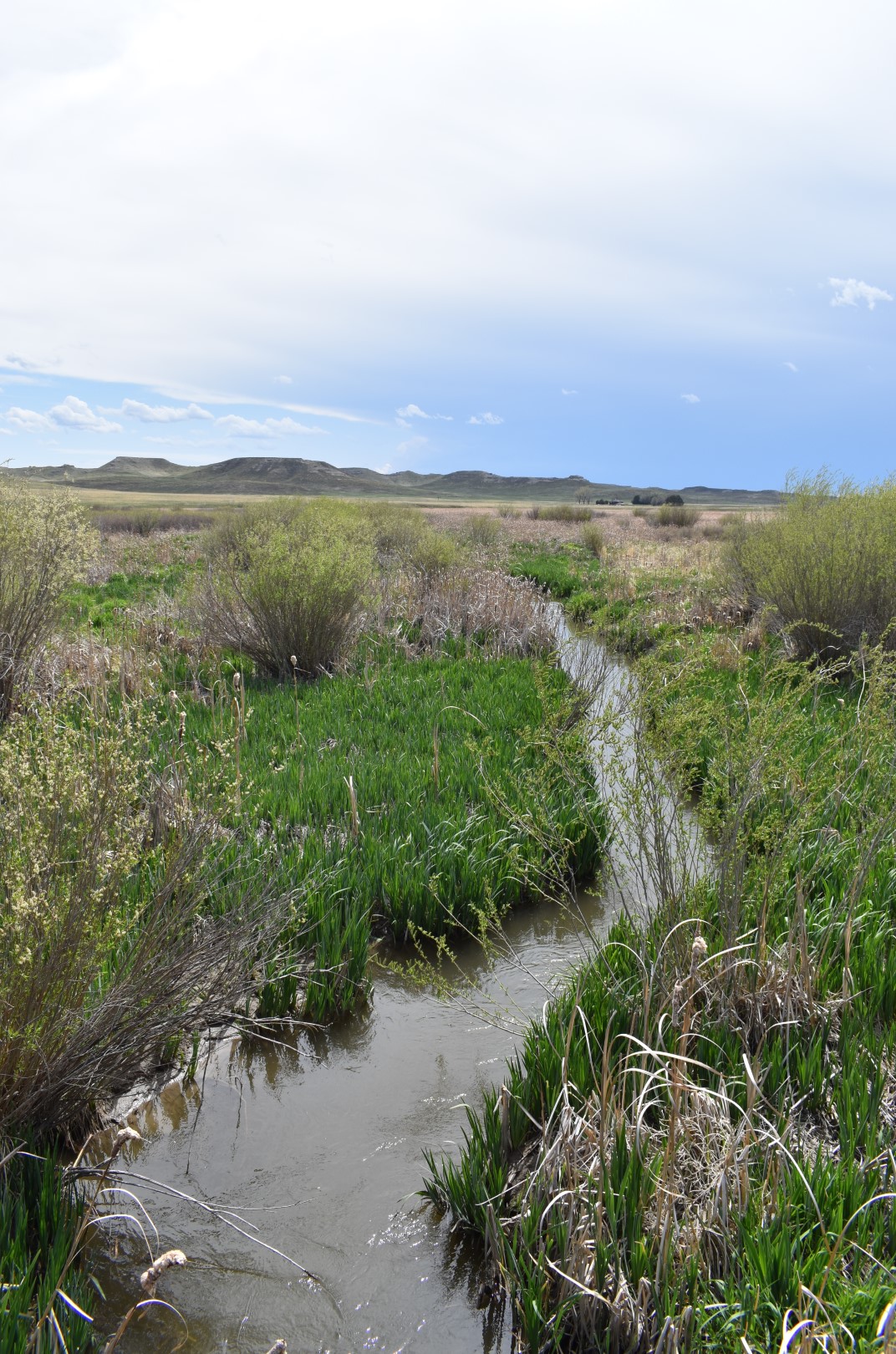
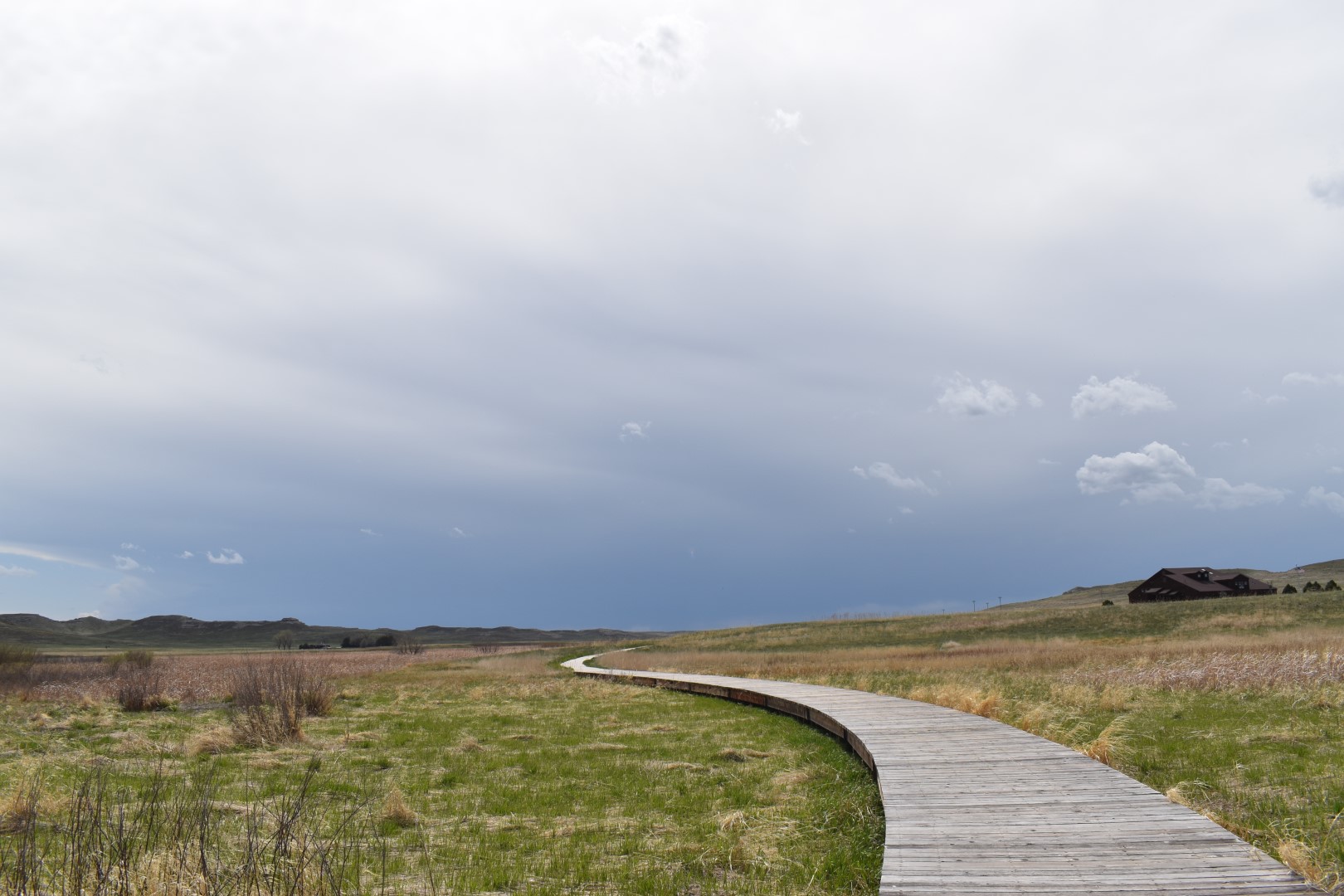

We spent quite a long time in the Visitor Center, viewing the exhibits and watching the educational video. The museum was small but the exhibits were awesome and we had a lot of fun. We learned about how the bone bed was formed and later discovered. The most likely theory is that during a period of extreme drought, animals congregated at the few remaining water holes along the ancient riverbed. Soon the vegetation around the water holes had been consumed and the animals could no longer travel far enough to find food. Thousands of animals died of starvation around these water holes. Eventually the rains returned, covering the skeletal remains with sediment and preserving them for millions of years.

The most common animal found in the Agate bone bed is Menoceras, a three-foot tall rhinoceros that may have traveled in large herds. Others include Stenomylus (a two-foot tall gazelle-camel), Parahippus (an ancestor of horses), Moropus (a large animal related to both horses and rhinos), Dinohyus (a large scavenger related to cows and pigs), as well as carnivores like bear dogs. In addition to the numerous bones found in the bone bed, paleontologists also found tracks, bear dog dens, and the long mysterious Daemonelix or “Devil’s Corkscrew”.
In 1892, geologist Erwin H. Barbour excavated and examined strange corkscrew-shaped fossils found in the Agate area. He concluded that the corkscrews were fossils of enormous taproots and named them Daemonelix (pronounced dee-muh-NEE-lix) meaning “devil’s corkscrew”. It wasn’t until 1904, during the excavation of the Agate bone bed, that paleontologist Olaf Peterson found rodent skeletons inside some of the corkscrews. The rodents were none other than prehistoric land-beaver Palaeocastor, and it was soon theorized that the Daemonelix weren’t taproots at all, but spiral-shaped burrows. We read an awful lot about the Daemonelix and Palaeocastor at the Visitor Center, but now it was time to see the Daemonelix for ourselves.
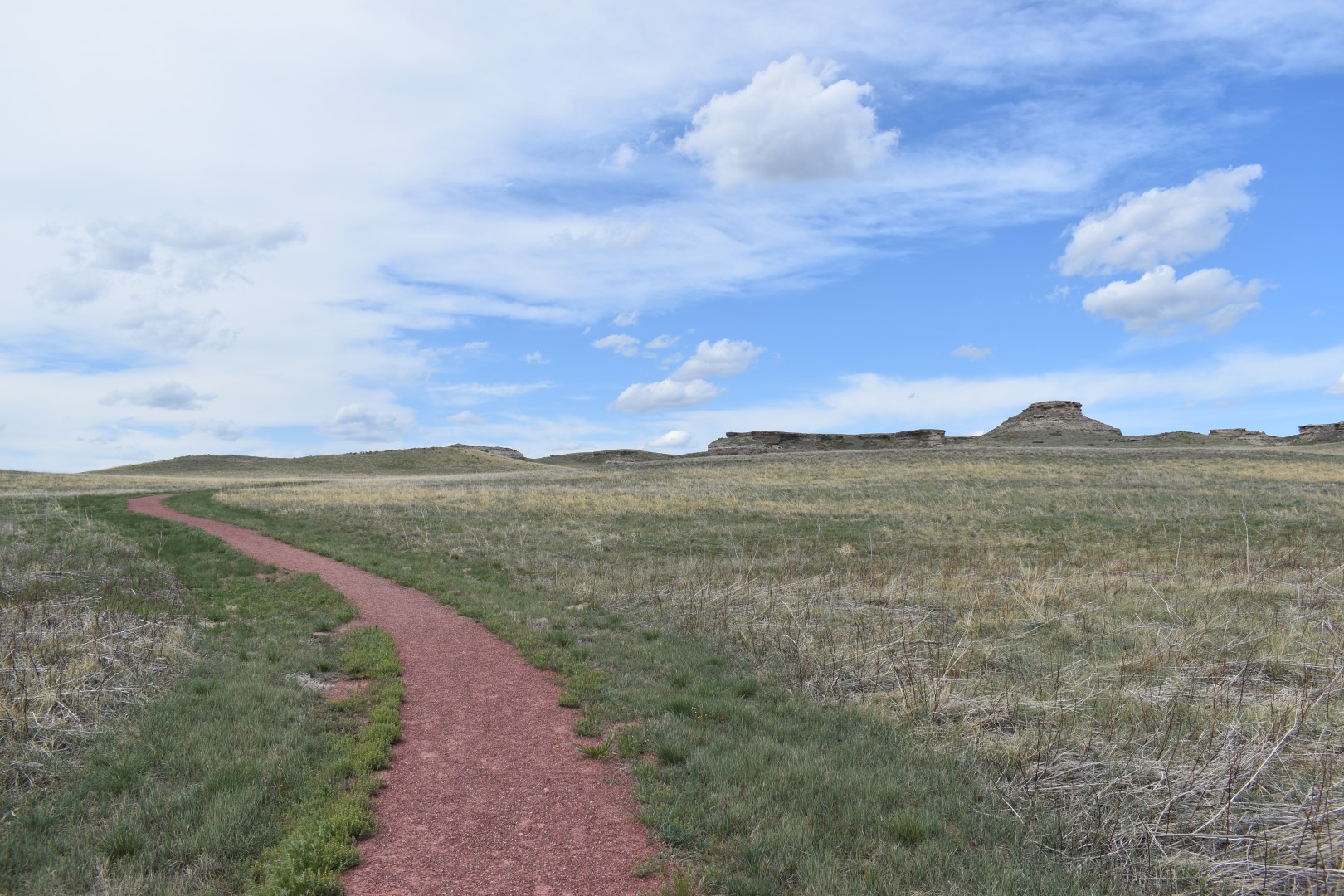
The Daemonelix Trail starts near the entrance to Agate Fossil Beds, a few miles west of the Visitor Center. This one-mile loop visits actual Daemonelix fossils that have been left in the hillsides. Interpretive signs and a paper trail-guide led the way.
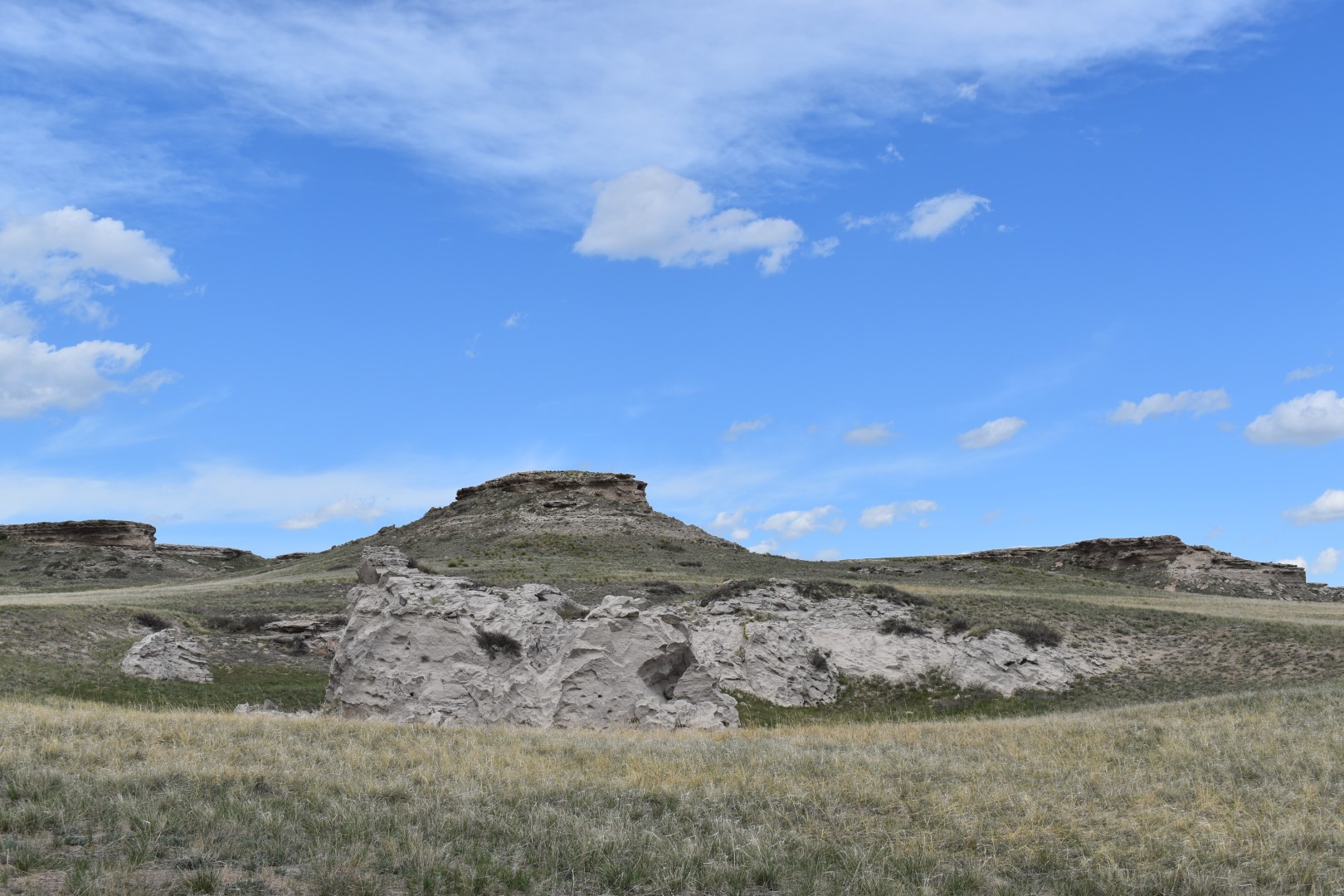
There are plenty of other fossils visible along the trail including the sand dunes (above) and paleosols (fossil soils which contain fossilized roots, insect holes, and small rodent burrows), but of course the Daemonelix is the star of the show.
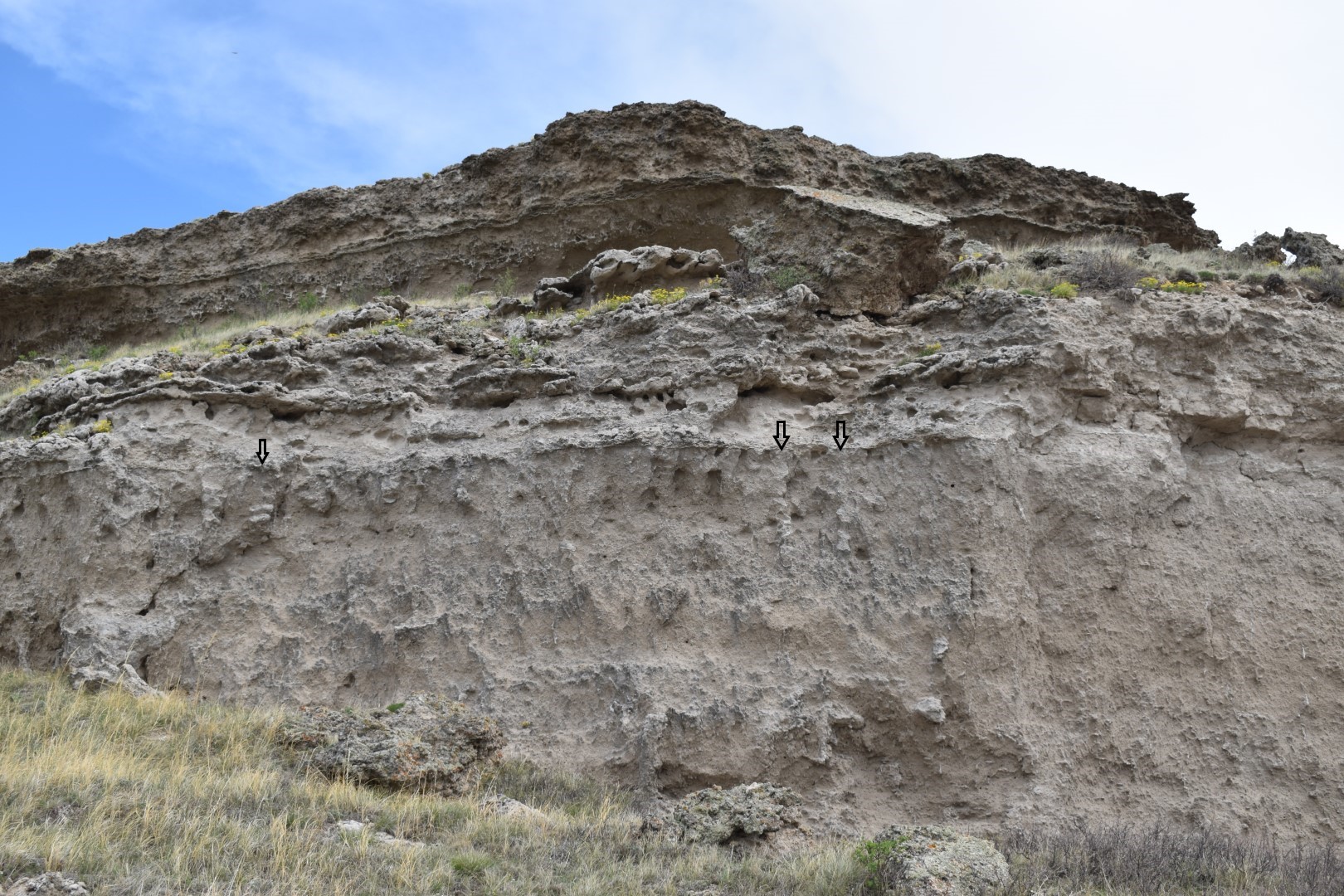
The above cliff face was our first sighting of Daemonelix…and we could hardly see them. Eventually, after studying the picture on the sign, we were able to pick out a few of the more obvious burrows. The tops of the burrows (where the arrows are in the above picture) mark the ground level when the burrows were created. The spacing and quantity of the burrows suggest to scientists that Palaeocastor lived in colonies like today’s prairie dogs. This cliff was just the first taste of Daemonelix fossils, there were plenty more (and better) specimens along the trail.

I never thought I’d be excited to see a fossilized burrow, but these were super cool. There were a few more exhibits along the trail, but the above Daemonelix was by far the best.
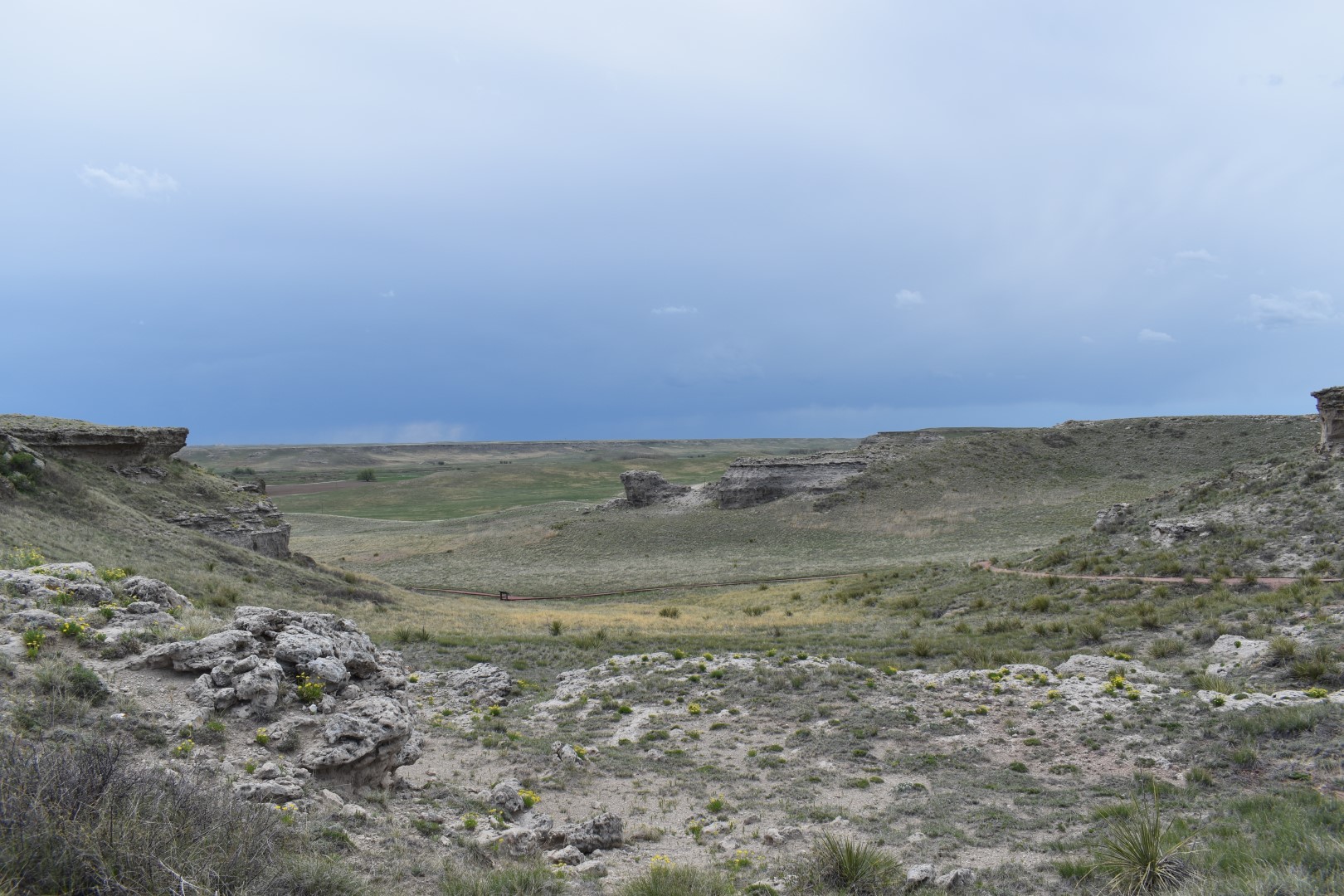
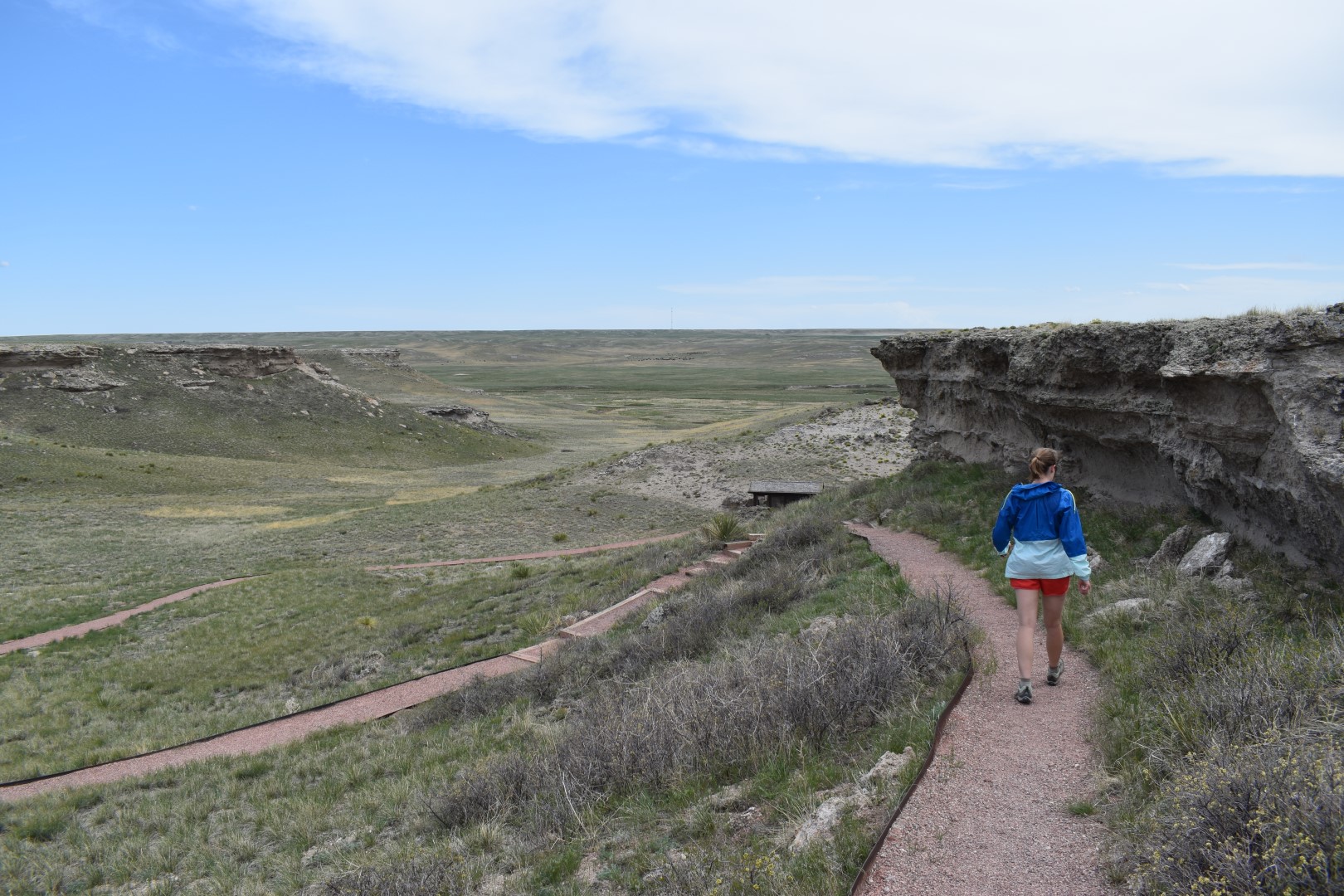
So far we were two for two on exciting Nebraska stops, would our third and final stop be just as awesome? A thunderstorm was brewing so we had to get a move on to our next stop, Toadstool Geologic Park.
I would like to acknowledge that Agate Fossils Beds National Monument is on the ancestral land of the Očhéthi Šakówiŋ (Great Sioux Nation), Cheyenne, and Arapaho.
Chelsea

Pingback: Scotts Bluff National Monument | Nebraska | 05/20/21 – Colorado Chelsea
I have read about the spiral burrows, and most enjoyed your explorations (and pictures!). Thanks so much for this.
LikeLike
Thanks Andrea!
LikeLike
I’m still not over how freaking cool the Daemonelixes were! (And I still don’t know how to pluralize that word.) I also got a good laugh out of the Daemonelix being one Diana tall 😂
LikeLike
I was cracking up when I put that in there lol and I don’t know how to pluralize it either!
LikeLiked by 1 person
This looks like such a neat area to learn more about fossils and dinosaurs. That’s awesome that you could also see fossils along the trail. The Daemonelix looks so interesting.
LikeLike
It was really exciting to hike to fossils. I’m glad they were able to leave them along the trail for us to find!
LikeLiked by 1 person
This looks awesome!! I have never been to Nebraska – you have given me a reason to go!
LikeLike
There’s a surprising amount of things to do in Nebraska…especially surrounding the Oregon Trail history, if that’s something you’re into!
LikeLiked by 1 person
Thanks for pointing out an other place for me to visit.
LikeLike
Thanks for reading & commenting 🙂 glad you are finding new places to visit.
LikeLike
This is very cool! Now i have a new stop on my list of places to see!!
LikeLike
Thanks Michelle! I’m glad to hear you found a new place to visit 🙂
LikeLiked by 1 person
Well you just made Nebraska a little bit cooler in my books.
LikeLike
Thanks Jessica! I was surprised that Nebraska had so many neat places to visit.
LikeLiked by 1 person
Pingback: Toadstool Geologic Park | Nebraska | 05/20/21 – Colorado Chelsea
It was pouring the day we visited this park, so all we did was spend time in the (very fascinating) visitor center. I regret we weren’t able to take a walk.
LikeLike
The visitor center is very nice but the scenery is so beautiful, I’m sorry you missed it! If I ever get back, I’ll do the longer trail we missed and go see the old fossil quarries.
LikeLiked by 1 person
Like you, we also want to go back. We really enjoyed exploring Nebraska and would like to discover more of it.
LikeLiked by 1 person